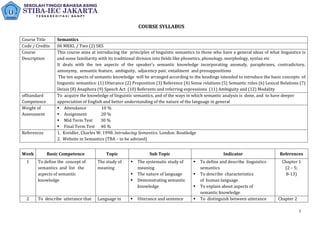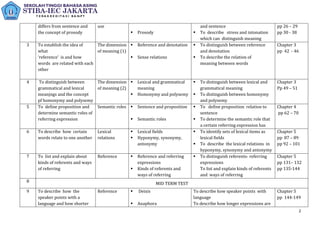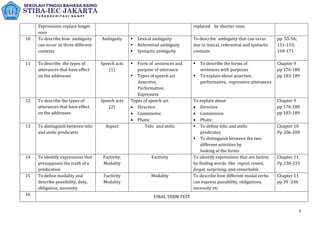This course introduces students to linguistic semantics through 11 topics: (1) utterances and propositions, (2) reference and sense relations, (3) semantic roles, (4) lexical relations, (5) reference and referring expressions, (6) deixis and anaphora, (7) ambiguity, (8) speech acts, (9) aspect, (10) factivity, and (11) modality. Students will learn about the systematic study of meaning in language and analyze the semantic dimensions and relations between linguistic units. Assessment includes attendance, assignments, midterm and final exams. The goal is for students to understand semantic analysis and gain a deeper appreciation of language.


